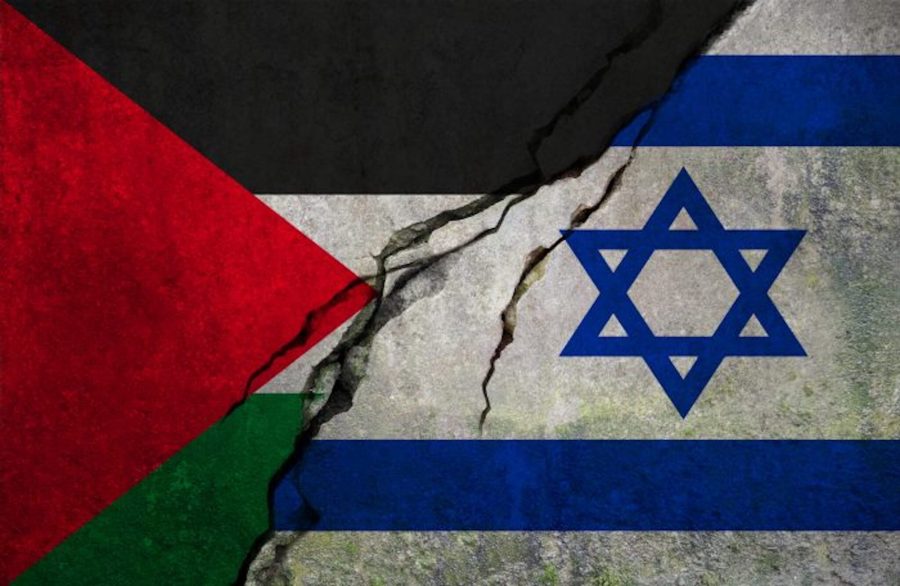The theory of manufacturing consent stems from Edward S. Herman’s and Noam Chomsky’s book, Manufacturing Consent: The Political Economy of the Mass Media (written in 1988). It follows the key idea that the media instils values, beliefs, and codes of behaviour into people, which integrates them into society and serves the ends of a dominant elite (Herman and Chomsky, 1988).
Mass media serves the ends of the elites, and in order to allow them get their message to the public, a propaganda model contains five filters (Herman and Chomsky, 1988; Chomsky, no date):
- Size, ownership, and profit orientation of mass media
- The advertising license to do business
- Sourcing mass media news
- Flak and the enforcers
- Anti-communism (anti-ideology)
In contemporary media, manufacturing consent can be visible within coverage surrounding the genocide on Palestine. With intense conflict between Israel and Hamas, an estimated 69,236 Palestinians in the Gaza strip have been killed, 80% of which have been civilians (as of 25th October 2025) (Wikipedia, 2025). The amount of Israelis killed as of 25th October 2025 was 1,983 (Wikipedia, 2025). This example can be applied to the five filters.
- Size, ownership, and profit orientation of the mass media
The majority of Western news outlets are owned by large corporations which have strong ties and political connections to their governments alliances. In the case of the UK and USA, these include longstanding ties with Israel, and therefore news outlets control their narratives in order to maintain shareholder satisfaction. - The advertising license to do business
Many advertisers avoid association with politics, especially such surrounding war crimes and civilian casualties, and therefore they would avoid working with any mass media sources which heavily and critically report on the graphic details of the genocide. - Sourcing mass media news
It is significantly easier for mass media outlets to source news from Israeli officials, as Palestinian journalists work under heavily dangerous circumstances, and are regularly killed while working. By 11th August 2025, Israel had killed 270 journalists (Ali and Duggal, 2025). Therefore, news coverage can become biased towards Israel, especially since Western governments often provide messages that align with Israel’s reports. - Flak and the enforcers
Those who emphasise the humanitarian crisis and suffering of Palestinians can face strong backlash, with accusation of bias, threats to funding, or even online harassment. This can lead to fear and hesitancy from mass media outlets when considering reporting on the genocide. - Anti-communism (anti-ideology)
The mass media often describes the genocide with Israel defending themselves against a terrorist enemy (Hamas), failing to provide the full context.
The Palestinian genocide reinforces Herman and Chomsky’s manufacturing consent theory, as it can be applied to the propaganda model. However, some could argue that some Western media sources do provide coverage that isn’t biased, and that the audience itself is not passive.
References:
Ali, M. and Duggal, H. (2025) ‘Here are the names of the journalists Israel killed in Gaza’, Al Jazeera, 11th August. Available at: https://www.aljazeera.com/news/2025/8/11/here-are-the-names-of-the-journalists-israel-killed-in-gaza (Accessed 14 November 2025).
Chomsky, N. (no date) Noam Chomsky: The five filters of the mass media, Public Reading Rooms. Available at: https://prruk.org/noam-chomsky-the-five-filters-of-the-mass-media-machine (Accessed: 17 October 2025).
Herman, E.S. and Chomsky, N. (1988) Manufacturing Consent: The Political Economy of the Mass Media. Bodley Head.
Weeks, D (2023) ‘Israel-Palestine: In search of our shared humanity’, New Hampshire Bulletin, October 31st. Available at: https://newhampshirebulletin.com/2023/10/31/israel-palestine-in-search-of-our-shared-humanity/ (Accessed: 17 November 2025).
Wikipedia (2025) ‘Casualties of the Gaza War’, Wikipedia. Available at: https://en.wikipedia.org/wiki/Casualties_of_the_Gaza_war#Gaza_Strip (Accessed: 14 November 2025).

